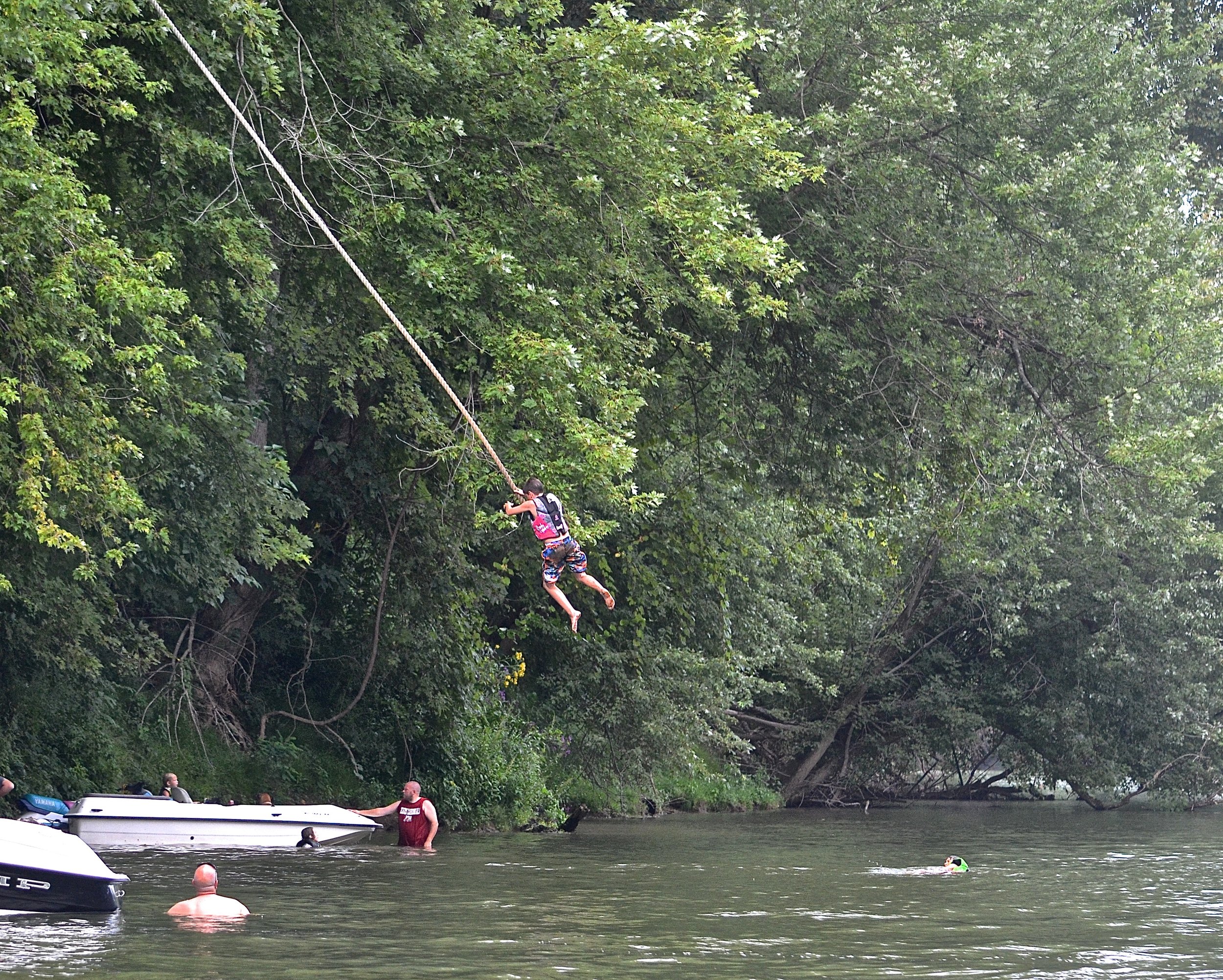Is it safe to swim in the Ohio River?
Yes and no. There are inherent risks in all recreation, including swimming in large waterways. However, taking a dip in the Ohio River can be safe and refreshing! That’s especially true during the dog days of summer.
Best Places to Swim
Photo by Karsten Winegeart
Swimming Events
A swimming event is a great way to get your toes wet in river swimming. The annual Bill Keating, Jr. Great Ohio River Swim, in Cincinnati, Ohio, is perfect for swimmers who are new to the river. Organized in support of the nonprofit Adventure Crew, swimmers can hop in with the security of a safety team on standby.
While Boating
Swimming while already out boating is popular, especially for folks who are out tubing or water-skiing. Just make sure you’re out of the barge channel, haven’t been drinking, and keep your life-jacket on. Also, avoid straying where you may not be seen by boat traffic.
Near the Shore & Off Docks
Swimming near the shore can be fun while being farther from barges and other boat traffic. Just be careful of any underwater debris (water shoes are a good idea) and be careful with potentially slippery entry and exit points.
Precautions While Swimming in the Ohio River
If you’re out swimming outside of an event, make sure to use common sense. Additionally, here are some further precautions to take specific to the Ohio River.
Watch for Barges
Barges are dangerous. They cannot stop, they cannot turn, and—even if they could—they likely cannot see you. You can check the live location of barges on the river with the Ohio River Way’s Digital Map, and avoid staying in the barge channel.
Photo by Susan Griffin Ward
Avoid Swimming After Heavy Rain
Folks should avoid the water after a heavy rain, for two key reasons:
The current is stronger, the water is murkier, and there is more and larger debris. The river can carry whole trees.
Hazardous bacteria can temporarily exceed safe levels. After rain events, it enters waterways from overland runoff and overflows of combined sanitary and storm sewers. Thankfully, you can check if bacteria levels are in the green—as well as toxins from harmful algae blooms—on ORSANCO’s Weekly Water Quality Report.
The river’s water quality has vastly improved since the 1970s. Half a century ago, it’s true that the river generally wasn’t clean enough for safe swimming. Now, bacteria levels are typically below advisory levels except after heavy rain events. Conditions are improving as communities invest in infrastructure to mitigate combined sewer overflows.
Alcohol Can Lead to Drowning
Researchers have found that drinking alcohol can exacerbate a number of conditions which are dangerous to swimmers, including hypoglycemia, hypothermia, hyperventilation, and caloric labyrinthitis. Caloric labyrinthitis, for instance, is an inner ear disturbance that can disorient swimmers, even causing experienced swimmers to swim downwards. No matter who you are, drinking and swimming can be deadly. Read more here.
Avoid Locks and Dams
Do not swim near locks or dams. It is not safe, and the increase and decrease in the flow of water can be dramatic.
Wear a Life-Jacket
As the name implies, a life-jacket might just save your life. Whether you’re swimming, paddling, or boating, you should wear a life-jacket in the Ohio River.
Photo by Susan Griffin Ward
Enjoy the water!
We hope you have a safe, fun experience on the Ohio River! There are inherent risks to recreation, but responsibly watching for those risks is part of the adventure of being outside. Whether you swim, paddle, boat, or just take a stroll along the river, it’s worth the journey to behold.
Safety on the Ohio River
Check the Ohio River Way’s page on Safety for more resources for how to stay safe while on the river, including videos and the Ohio River Way’s Safety Guide, Please note: The Ohio River Way assumes no liability for nor can guarantee your safety.



